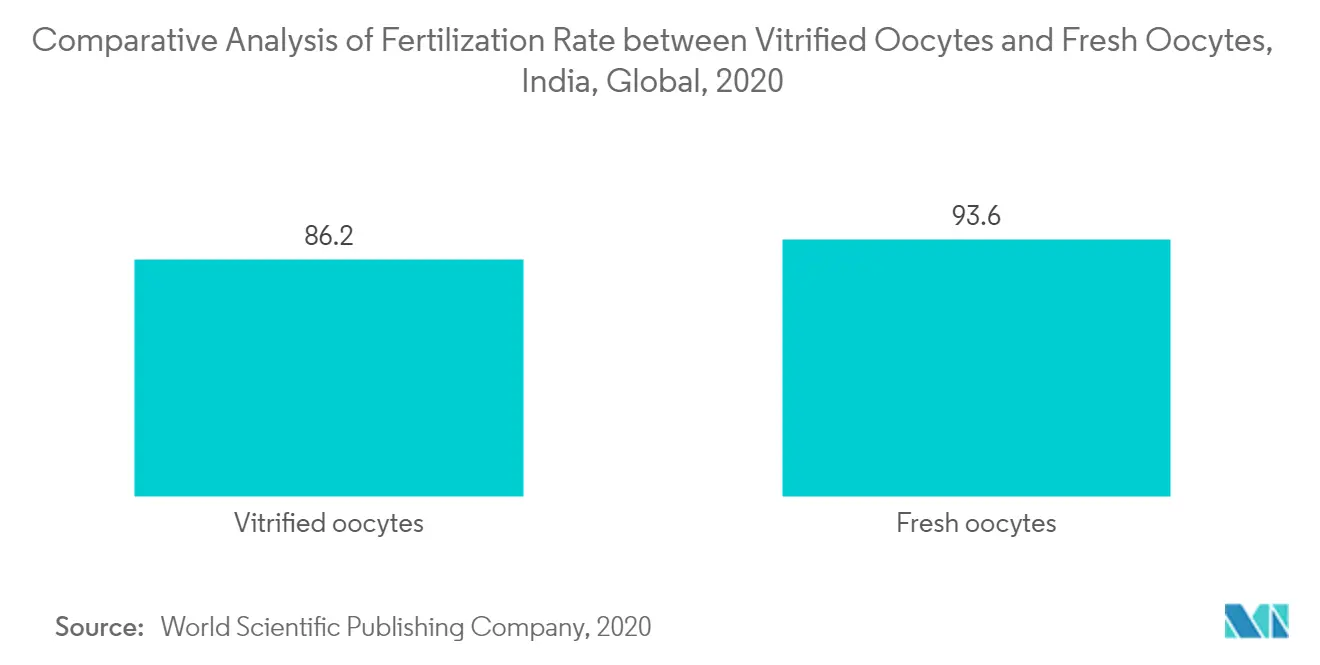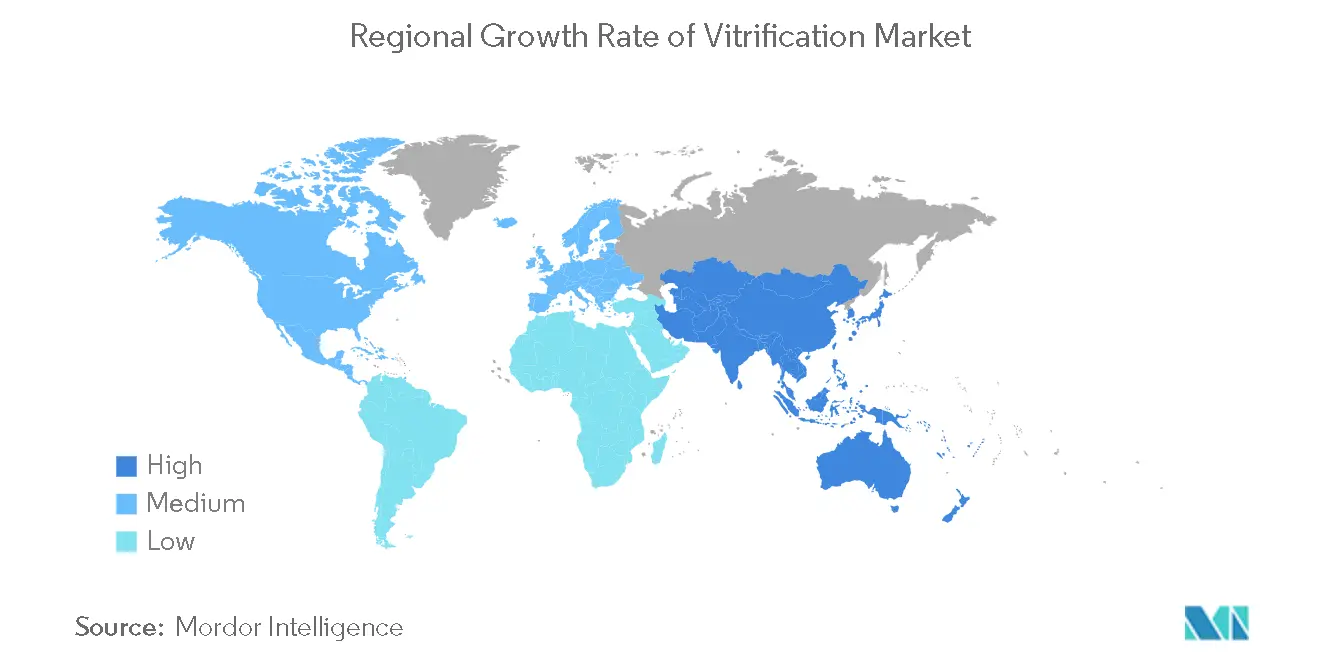Market Trends of Global Vitrification Industry
This section covers the major market trends shaping the Vitrification Market according to our research experts:
Oocyte Freezing Segment Is Expected to Hold A Major Share in The Vitrification Market
Mature oocyte vitrification is widely considered a significant advancement in assisted reproductive technology (ART) in recent years and accounts for a major share in the vitrification market. A growing number of women are opting to preserve their fertility through this method, both to delay childbearing and for medical reasons such as cancer. As oocytes are particularly sensitive to cryopreservation because of their huge size, low surface area to volume ratio, relatively high water content, and presence of the meiotic spindle, vitrification is a preferred technique over cryopreservation for oocytes.
Furthermore, many major players are also coming forward to deliver devices, kits, and consumables for Oocyte vitrification, in turn contributing to the market share. For instance, Cryotop is a unique vitrification container designed by KITAZATO CORPORATION has been used in over 1,500,000 clinical instances in over 90 countries and 2,200 assisted reproduction clinics for more than a decade. Moreover, the success rates of fertilization via oocyte vitrification are also significantly high and have given the best results. For instance, As per the comparative study conducted in 2019 in World scientific, an academic publisher, between fresh and cryopreserved oocytes in an oocyte donation program, a total of 600 oocytes were investigated (226 vitrified oocytes and 374 fresh oocytes). After warming, 218 oocytes survived, resulting in a 96.4 percent survival rate. The fertility rate was 86.2 percent, while the embryo formation rate was 93.6 percent. Therefore, higher success rates of vitrified oocytes and the inclination of key players towards this segment may result in a major share for this segment in the vitrification market.
Below is a bar graph showing the comparative analysis of fertilization rate between vitrified oocytes and fresh oocytes. The data shows that the fertilization rate of vitrified oocytes is nearly equal compared to the fertlization rate of fresh oocytes.

Europe is Expected to Hold a Significant Share in the Market
Europe is expected to dominate the vitrification market due to the rise in infertility rates, rising public knowledge of fertility treatments, technical improvements, and government initiatives that have all contributed to Europe's dominance. Many ART cycles will take place in Europe due to the well-established presence of IVF clinics.
Delay in parenthood has become increasingly popular in Europe. According to the Centers for Disease Control and Prevention (CDC), The rate of IVF fertilization in the 35-39-year age range is significantly high, as the eggs generated by the reproductive system are less efficient for fertilization with male spermatozoa in older women, that increases the risk of genetic abnormalities. For instance, According to Epidemiology for public health reports, in Italy, the number of cycles completed in 2018 is 8434 compared to 7514 in 2017, with a rise of 12.2%. Treatment with female donor gametes (oocytes) was the most common method (5901 cycles, or 46.5 percent of the total), followed by donor embryos (2783 cycles, or 41.1%), and donor sperm(839 cycles, 12.4 percent). The number of ART cycles using pre-implantation genetic diagnosis increased as well (3441), as did the number of facilities that provided this service (rising from 42 in 2017 to 46 in 2018). As a result of the use of these approaches, 705 live births have been recorded.
According to the European Society of Human Reproduction and Embryology (ESHRE) report published in 2019, Spain remains the most active country in Europe in terms of assisted reproduction, with a total of 140,909 treatment cycles conducted. Spain maintains its lead over Russia (121,235 cycles), France (104,733), and Germany (104,733). (969,226). Treatments involving IVF, ICSI, intrauterine insemination, and egg donation are among the cycles monitored by ESHRE.
Moreover, well-established IVF services and the presence of favorable healthcare infrastructure are fueling the growth of the overall regional market to a large extent in Europe.


